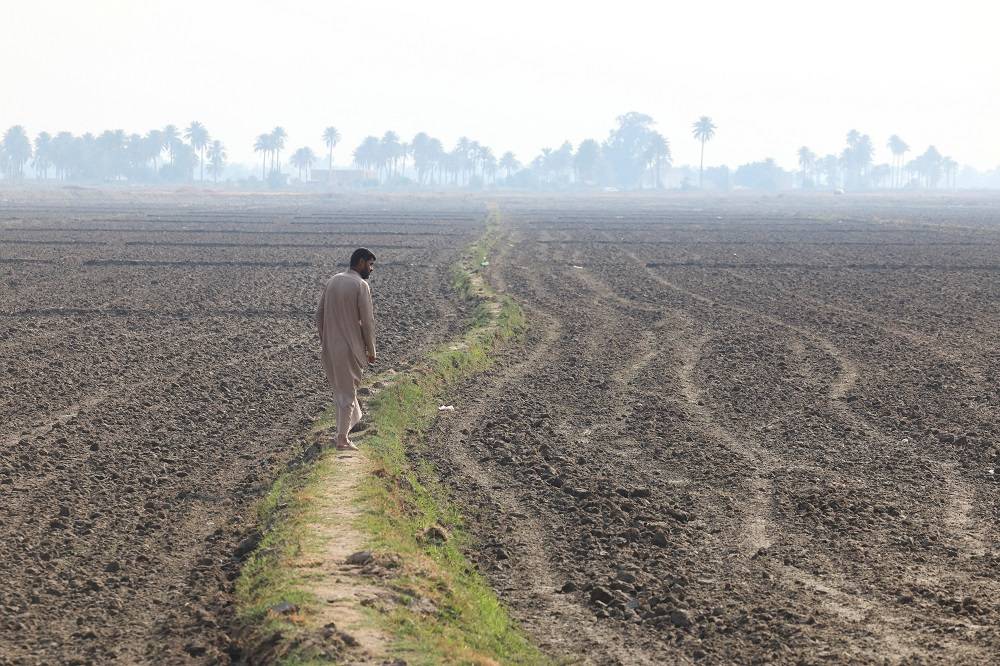Civil wars and strife often witness smaller wars and conflict between parties fighting in the same camp. This took place, for example, between Christian parties during the 1975-90 Lebanese civil when the Kataeb and National Liberal Party waged bloody battles for dominance. They culminated in the defeat of the Tigers Militia – the armed wing of the NLP – and establishment of the Lebanese Forces.
In Afghanistan, Mujahideen factions fought against the communist rule in Kabul and its Russian supporters. No sooner had the Mujahideen claimed victory that they turned against each other in 1992, turning Kabul into rubble. Their war only ended with the rise of the Taliban, which swallowed or nearly swallowed them up whole.
In Algeria, the 1990s saw the emergence of dozens of armed groups that fought against the rulers in order to oust and replace them with an “Islamic government.” They were battling the Algerian army, while the factions were also fighting each other in order to “unite their banner.” The infighting helped the Algerian security forces to turn the tide in their favor and defeat all of the armed groups.
The above introduction leads to the question: What sort of relationship is in store in the future between the rival ISIS and al-Qaeda organizations?
Both organizations follow the same ideology even though ISIS was formed years after al-Qaeda.
ISIS is the product of the 2003 US invasion of Iraq. Al-Qaeda, meanwhile, was born in the late 1980s in Afghanistan during a time of resistance against the Red Army and communists. In the 1990s, the Egyptian al-Jihad organization merged with al-Qaeda, leading to the establishment of the so-called Qaidat al-Jihad group, which was predominantly comprised of Egyptian members.
The rift between ISIS and al-Qaeda happened after the eruption of the Syrian civil conflict in 2011. At the time, al-Qaeda in Iraq was known as the Islamic State in Iraq. The rift was the culmination of clashes between al-Qaeda’s Iraqi branch, led by Jordan’s Abu Musab al-Zarqawi, and several Sunni factions that were fighting the American “occupiers”. These factions refused the dictates of Zarqawi, who wanted to impose the authority of his organization over all Iraqi factions.
Zarqawi’s actions prompted several Sunni groups to work with the Americans and Iraqi government instead of joining an organization that was leading the country towards sectarian civil war. The Sunni resistance, or Sahwat as they would later be known, defeated al-Qaeda, forcing it to retreat from the confrontation. Command was given to Iraqi members, while the non-Iraqis took a backseat.
Zarqawi died in 2006. He was succeeded by Abu al-Hassan al-Muhajir (Abu Ayyoub al-Masri), another foreign leader of al-Qaeda. The organization was at the time, however, identified as Iraqi and operating under the name the Islamic State in Iraq, led by Abu Omar al-Baghdadi. He would be succeeded after his killing by Abu Bakr al-Baghdadi.
When the Syrian conflict erupted from peaceful protests against the regime of president Bashar Assad in 2011, Abu Bakr al-Baghdadi was quick to dispatch Syrian Abu Mohammad al-Julani to the country. Al-Julani was a leading member of al-Qaeda and worked for al-Baghdadi as part of the Islamic State in Iraq. In Syria, he was tasked with organizing an armed movement to act against the regime.
The Syrian conflict led to the fallout between al-Baghdadi and al-Julani. Al-Baghdadi wanted al-Julani to operate under his command in Syria. In 2013, the Islamic State in Iraq transformed to become the Islamic State of Iraq and the Levant after Syrian regime forces withdrew from the border with Iraq. Al-Baghdadi then declared that the Sykes–Picot border between the neighboring countries was no more.
Al-Julani, however, rebelled against his Iraqi leader, say the latter’s supporters. Al-Baghdadi’s supports showed no mercy to their adversaries, whether they were Iraqi or Syrian government soldiers, or civilians who were viewed as apostates or infidels, or even fighters from other Islamic organizations that did not swear allegiance to the “State”.
The al-Qaeda leadership tried to avert confrontation with al-Baghdadi. It sent some of its most prominent leaders to Syria to resolve the dispute or strengthen al-Julani should efforts fail to end the rift.
The Iraqi leader, however, did not forgive the Syrian for “betraying the cause.” Al-Baghdadi believed that al-Julani turned against him when he was transferred to Syria, where he formed the al-Nusra Front as an independent branch of al-Qaeda. This branch would answer directly to the al-Qaeda command based on the Afghanistan-Pakistan border, not the Iraqi leadership.
On the ground, ISIS swallowed the Syrian al-Qaeda branch whole. Its sweep of Syria was only stopped with the beginning of the operations of the US-led international coalition against al-Baghdadi’s organization in September 2014. This allowed al-Julani to catch his breath and rebuild the al-Nusra Front. Its operations became limited to northwestern Syria, the only region where al-Baghdadi’s fighters could not expand.
Al-Julani also waged small “civil” wars against extremist Islamic groups active in areas under his control. He succeeded through force and sometimes through dialogue to eliminate the majority of armed groups that were fighting independently against the regime. The groups that managed to escape began to work directly under the Turkish army and its intelligence after their forces secured vast areas of northwestern Syria (Idlib and Latakia), its north (Aleppo) and northeast (al-Raqqa).
ISIS was defeated militarily in Syria in spring 2019 and al-Baghdadi died in a US raid in the Idlib countryside later that year. ISIS retains a few cells that are trying to regroup under the command of their new leader Abu Ibrahim al‑Hashimi al‑Qurashi, but they are still weak and do not pose a serious threat to adversaries, whether in the Syrian regime or Hayat Tahrir al-Sham, which was established as a “successor” of the al-Nusra Front.
The ISIS collapse in Syria did not spell the end of clashes between the group and al-Qaeda. ISIS affiliates across the globe have pledged allegiance to their new leader and are active in combating “infidels and apostates” in various countries, such as Yemen, Somalia and Afghanistan, and the African Sahel. ISIS media boasts of these clashes and often reports on fighting between its members and al-Qaeda in the Sahel region.
There is no doubt that these small “civil wars” between ISIS and al-Qaeda may expand or become contained. The weakness of both organizations is the factor that will determine which way the fighting will go. The weakness does not allow them to wage a largescale confrontation that would end in the victory of one over the other and the “unification of banners”. The Armed Islamic Group of Algeria tried to do this in the 1990s and failed.
Another factor is that the balance of power does not favor one party over the other as it did in the past. Under al-Baghdadi, ISIS used to boast that it was ruling a “state” due to its control over large swathes of Syria and Iraq. This is no longer the case. Al-Qaeda, meanwhile, is now no more than an armed group that does not control a “state” or even an “emirate”. It is now at the command of the “owners of the land,” such as the Taliban in Afghanistan.
Both organizations appear at an impasse, meaning the competition between them and their terrorist attacks around the globe will continue for years to come, unless their leaders agree to unite forces.










